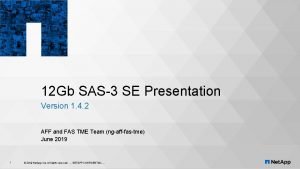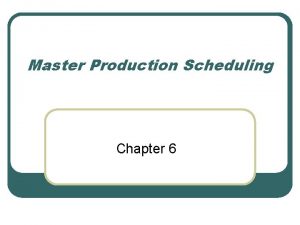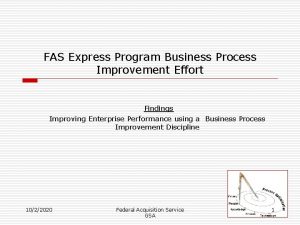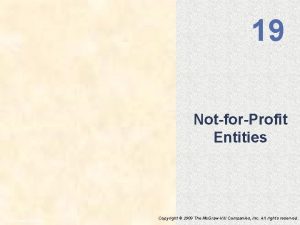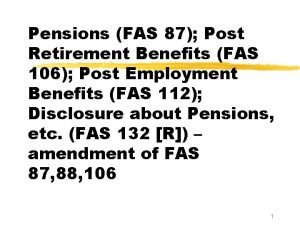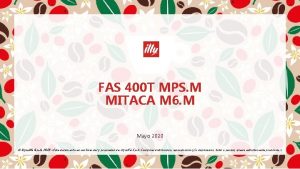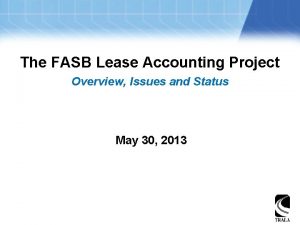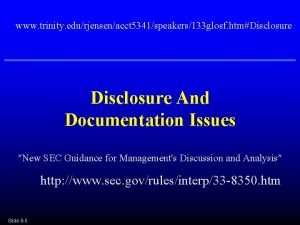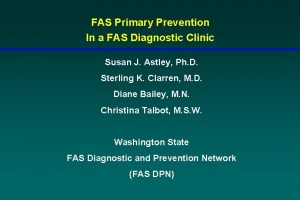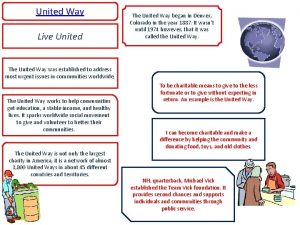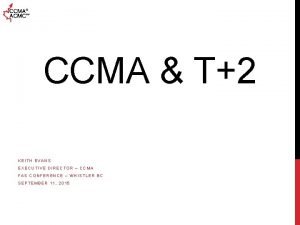The Effect of FAS 166167 on the United













- Slides: 13

The Effect of FAS 166/167 on the United States Financial Accounts Prepared by Susan Hume Mc. Intosh and James Kennedy WPFS Workshop on Securitization May 28, 2010 Madrid, Spain

Why Was a Change Necessary? Robert Herz, chairman of the FASB, said: “These changes were proposed and considered to improve existing standards and to address concerns about companies who were stretching the use of off-balance sheet entities to the detriment of investors. The new standards eliminate existing exceptions, strengthen the standards relating to securitizations and special-purpose entities, and enhance disclosure requirements. They’ll provide better transparency for investors about a company’s activities and risks in these areas. ” 2

Major Points 3 l Growth of securitization in the U. S. l What does FAS 166 and 167 require? l Effects of FAS 166 and 167 on balance sheet l Data Issues for Financial Accounts l Challenges of FAS 166 and 167 for compiling financial accounts

Securitization Market the United States (unpaid balance of the loan collateral) 4 in

Growth of Securitization l l 5 Agency- and GSE-backed mortgage pools accounted for the vast majority of securitizations until about 10 years ago. Private ABS securitizations doubled their share of the market between the early 1990 s and 2006. For the past couple of years, private ABS issuance has been almost nonexistent, while charge-offs of these loans have been substantial. The outstanding balance of Ginnie Mae and GSE pool securities has increased substantially during the past couple of years, providing important support to the residential mortgage market.

FAS 166/167 6 l FAS 166 and 167 change the way financial institutions account for securitizations and special purpose entities (SPEs). SPEs are bankruptcy-remote entities. l FAS 166 considers whether securitizations and other transfers of financial assets are treated as sales or financings. l FAS 167 redefines previous accounting rules on determining when assets may be securitized and moved off the balance sheet. l Take effect for reporting periods beginning after November 15, 2009; for most financial institutions this is 2010: Q 1.

FAS 166/167 l 7 What changes under the new standards? Prior to FAS 166/167, a sponsor’s balance sheet showed only the fair value of the interests that it retained in a securitization. l Under FAS 166/167, the “primary beneficiary” will be required to include the entire carrying value of the securitized assets on the asset side of its balance sheet, and include the securitized debt as liabilities. l Banking organizations affected by the new accounting standards generally will be subject to higher risk-based regulatory capital requirements.

The Decision Process for Consolidation under FAS 166/167 Do I have: An interest in the SPE? Yes No The power to direct activities that most significantly impact economic performance? No Yes I do not have to consolidate the SPE. An obligation to absorb losses or receive benefits that could potentially be significant? No Yes 8 I am the “primary beneficiary “ I have a controlling financial interest. and must consolidate.

Effects of FAS 166/167 on Banks and Finance Companies in 2010: Q 1 Banks Finance Companies Shifts Level 2009: Q 4 Consumer credit 322. 1 27. 1 -349. 2 579. 4 Mortgages 28. 0 3. 7 -31. 7 2215. 6 C&I loans 35. 4 11. 2 -46. 6 345. 4 Commercial paper 132. 5 0 -132. 5 292. 5 Corporate bonds 253. 0 42. 0 -295. 0 3103. 8 Issuers of ABS Assets: Liabilities: 9 Billions of U. S. dollars

Effects of FAS 166/167 on GSEs in 2010: Q 1 GSEs Agency- and GSE-backed Pools Shifts Level 2009: Q 4 Agency- & GSEbacked securities -475. 1 -- 924. 9 Mortgages 4212. 9 -4212. 9 5383. 0 3738. 0 -4212. 9 5383. 0 Assets: Liabilities: Agency issues 10 Billions of U. S. dollars

Data Issues for Financial Accounts 11 l Better able to measure the outstanding balances of loans moved back onto the books of financial institutions. l Better measurement of household balance sheet. l Need to carefully monitor the private ABS sector for the next few quarters to make sure our estimation methods are appropriate to avoid double counting. l Some difficulty in matching instrument categories.

Some Challenges of FAS 166/167 12 l Entities that move assets onto their balance sheets will most likely have to hold additional capital since capital requirements are greater for assets on-balance sheet than those in an offbalance sheet SPE. l It is not clear how much FAS 166/167 will limit future securitizations by private entities. l U. S. Congress is currently working on financial reform legislation. SEC and FDIC considering new rules on securitization. l Uncertainty on final laws and rules makes future hard to predict.

Final Thoughts 13 l More complete data on assets and liabilities in the economy. l Better measure of household balance sheet and net worth. l Could be future refinements or adjustments to FAS 166/167. l FASB and IASB are working together to bring their rules for derecognition and consolidation into alignment. l Financial account compilers must continually reevaluate data sources.
